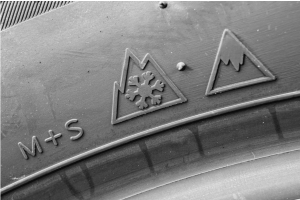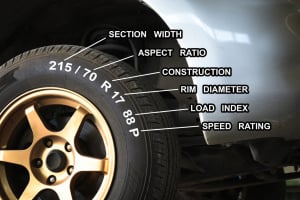
Having a spare tire in your vehicle is essential for any driver, as it provides a quick solution to a flat tire. However, many people overlook the importance of maintaining their spare tire, including checking the inflation. In this blog post, we'll go over how to check the inflation on a spare tire for a vehicle.
Why is it important to check the inflation on a spare tire?
The inflation on a spare tire is critical for several reasons. First and foremost, driving with an underinflated spare tire can be dangerous, as it can cause the tire to wear out more quickly and even blow out on the road. Additionally, an underinflated spare tire will not provide the proper support to the vehicle, potentially leading to poor handling and a decrease in fuel efficiency. Lastly, an overinflated tire can also be dangerous, as it may burst unexpectedly or cause poor handling.
What tools do you need?
Before checking the inflation on your spare tire, you'll need a few tools. These include a tire pressure gauge, which is available at most auto parts stores, and an air compressor or a tire inflator. You can use a portable air compressor or stop at a gas station with an air pump to inflate your tire.
Step 1: Locate the spare tire
The first step in checking the inflation on your spare tire is to locate it. Most vehicles come with a spare tire, which is either stored in the trunk or mounted underneath the vehicle. You can consult your vehicle owner's manual to determine where your spare tire is located.
Step 2: Remove the spare tire from its storage location
Once you've located the spare tire, remove it from its storage location. You might not need to remove the spare completely if the valve stem is exposed from the topside. Depending on your vehicle, this may require using a jack to lift the vehicle off the ground to access the spare tire. Be sure to follow the proper procedures for jacking up your vehicle and removing the spare tire.
Step 3: Check the tire pressure
Using a tire pressure gauge, check the tire pressure of your spare tire. Make sure that the pressure is within the recommended range listed in your vehicle owner's manual. Typically, the recommended tire pressure for a spare tire is between 60-80 PSI, but it can vary depending on the type of vehicle you have. The 60-80 lbs would be for a donut spare and that a full size spare would need to be the PSI listed on the placard in the driver's door jamb and wouldn't be as high normally. Also check PSI on the sidewall to be safe.
Step 4: Inflate the tire if necessary
If the tire pressure is too low, you'll need to inflate the tire using an air compressor or tire inflator. Be sure to inflate the tire to the recommended pressure listed in your vehicle owner's manual. Don't over inflate the tire, as this can cause it to burst unexpectedly.
Step 5: Reinstall the spare tire
Once you've checked and inflated the tire, it's time to reinstall it. Follow the proper procedures for reinstalling your spare tire, which may require using a jack to lift the vehicle and aligning the holes on the tire with the studs on the wheel.
Step 6: Check the tire pressure again
After reinstalling the spare tire, check the tire pressure again to ensure that it's still within the recommended range. If the tire pressure is too low, you may have a leak or puncture in the tire that needs to be repaired. In this case, it's best to take your vehicle to a professional mechanic for further inspection and repair.
Conclusion
Maintaining your spare tire is just as important as maintaining your regular tires. Checking the inflation on your spare tire is a simple process that can be done with a few tools and a little bit of time. By following the steps outlined in this blog post, you can ensure that your spare tire is ready to go in case of an emergency on the road.





